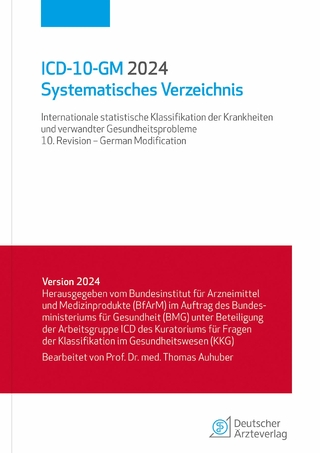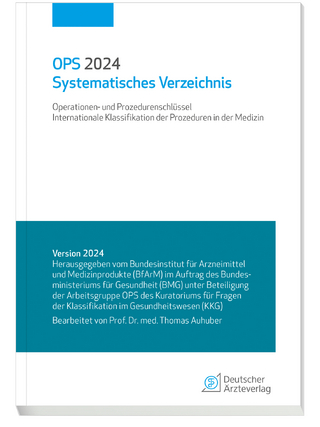
Biostatistics for Medical and Biomedical Practitioners
Academic Press Inc (Verlag)
978-0-12-817084-7 (ISBN)
This book is a valuable source for students and researchers looking to expand or refresh their understanding of statistics as it applies to the biomedical and research fields. Based on the author’s 40+ years of teaching statistics to medical fellows and biomedical researchers across a wide range of fields, it is a valuable source for researchers who need to understand more about biostatistics to apply it to their work.
Julien I E Hoffman, M.D., F.R.C.P (London) was born and educated in Salisbury (now Harare) in Southern Rhodesia (now Zimbabwe). He received a Bsc (Hons) in 1945 from the University of the Witwatersrand in South Africa, and his M.B., B.Ch. degree there in 1949. After working in the Departments of Medicine in Johannesburg General Hospital and in the Central Middlesex Hospital in London, he worked for the Medical Research Council at the Royal Postgraduate School in Hammersmith, London. Then he spent two years training in Pediatric Cardiogy at Boston Children’s Hospital, followed by 15 months as a Fellow at the Cardiovascular Research Institute (CVRI) at the University of California in San Francisco (UCSF). In 1962 he joined the faculty of the Albert Einstein College of Medicine in New York, and moved in 1966 to UCSF as Associate Professor of Pediatrics and member of the CVRI. He spent 50% of his time in the care of children with heart disease and 50% of his time doing research into the pathophysiology of the coronary circulation. His interest in Statistics began while taking his Science degree. In England, he took a short course run by Bradford Hill. On returning to Johannesburg he was assigned to statistical analyses for other members of the Department of Medicine. Learning was by trial and error, helped by Dr J Kerrich, head of the University’s Statistics Department. Hoffman began teaching statistics to Medical students in 1964, and in San Francisco conducted an approved course for Fellows and Residents for over 30 years. He was a member of the Biostatistics group for approving and coordinating statistics at UCSF. For many years he was a statistical consultant for the journal Circulation Research, and was intermittently statistical consultant to several other medical journals.
Basic Aspects of Statistics1. Basic Concepts 2. Statistical Use and Misuse in Scientific Publications 3. Some Practical Aspects4. Exploratory Descriptive Analysis5. Basic Probability
Continuous Distributions6. Normal Distribution7. Statistical Inference: Confidence Limits and the Central Limit Theorem8. Other Continuous Distributions9. Outliers and Extreme Values
Hypothesis Testing10. Hypothesis Testing: The Null Hypothesis, Significance and Type I Error11. Hypothesis Testing: Sample Size, Effect Size, Power, and Type II Errors
Discrete Distributions12. Permutations and Combinations; Logarithms13. Hypergeometric Distribution14. Categorical and Cross-Classified Data: Goodness of Fit and Association15. Categorical and Cross-Classified Data16. Binomial and Multinomial Distributions17. Proportions18. The Poisson Distribution19. Negative Binomial Distribution
Probability in Epidemiology and Medical Diagnosis20. Some Epidemiological Considerations: Odds Ratio, Relative Risk, and Attributable Risk21. Probability, Bayes Theorem, Medical Diagnostic Evaluation, and Screening
Comparing Means22. Comparison of Two Groups: T Tests and Non-Parametric Tests23. T Test Variants: Cross-Over Tests, Equivalence Tests24. Multiple Comparisons25. Analysis of Variance. I - One-Way26. Analysis of Variance. II - More Complex Forms
Regression and Correlation27. Linear Regression28. Variations Based on Linear Regression29. Correlation30. Multiple Regression31. Serial Measurements: Time Series, Control Charts, Cusums32. Dose-Response Analysis33. Logistic Regression34. Poisson Regression
Miscellaneous Topics35. Survival Analysis36. Meta-analysis37. Resampling Statistics38. Design: Sampling, Clinical Trials
| Erscheinungsdatum | 29.03.2019 |
|---|---|
| Verlagsort | San Diego |
| Sprache | englisch |
| Maße | 191 x 235 mm |
| Gewicht | 1360 g |
| Themenwelt | Informatik ► Weitere Themen ► Bioinformatik |
| Mathematik / Informatik ► Mathematik ► Angewandte Mathematik | |
| Medizin / Pharmazie ► Physiotherapie / Ergotherapie ► Orthopädie | |
| Studium ► Querschnittsbereiche ► Epidemiologie / Med. Biometrie | |
| Technik ► Medizintechnik | |
| ISBN-10 | 0-12-817084-0 / 0128170840 |
| ISBN-13 | 978-0-12-817084-7 / 9780128170847 |
| Zustand | Neuware |
| Haben Sie eine Frage zum Produkt? |
aus dem Bereich


